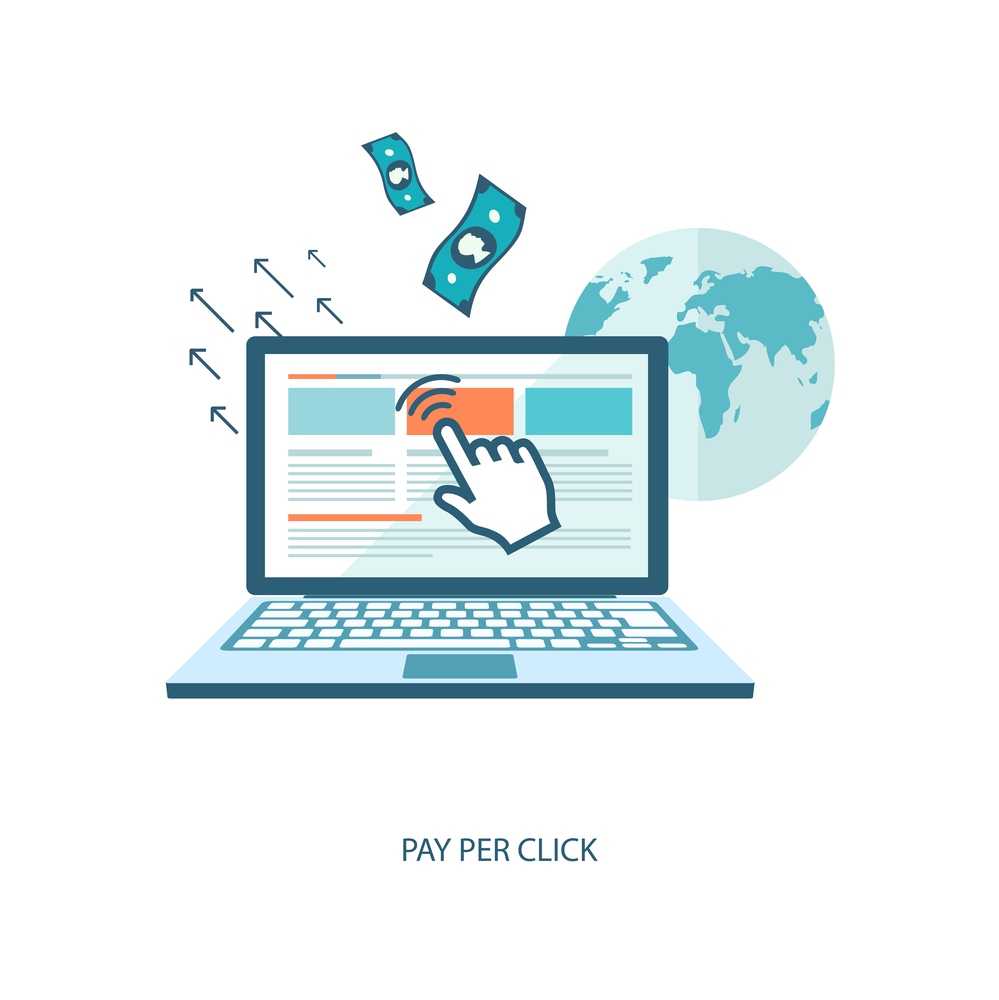As a business owner, there’s nowhere better to do your marketing than on the internet. Throughout the years, it’s become a digital marketplace, with businesses vying for the attention of consumers. Go on any website today and you won’t go two seconds without seeing ads pop up, many of which are targeted towards a certain group of consumers. This may be irritating for the consumer, but for the entrepreneur, it’s a gold mine. Especially if the ad a consumer clicks on happens to be yours.
This is what Pay Per Click advertising (or PPC) is all about. According to WordStream, it’s “a model of internet marketing in which advertisers pay a fee each time [an ad for your business] is clicked. Essentially, it’s a way of buying visits to your site, rather than attempting to “earn” those visits organically.”
So, how does it work exactly? Well when a potential consumer for your business clicks on the ad you put out, you have to pay a small fee to where it was placed (such as a search engine), WordStream explains. For instance, you may have to pay Google $3.50 when your ad is clicked on. But the consumer that clicked on your ad may make a $350.00 (or more) purchase. The fee then is a small price to pay for the hefty reward, one that may not have happened without the ad. Add many more clicks and well, you get the idea of the profits you’ll gain.
The Different Types of PPC Ads
There are three major types of ads your business can place as part of PPC advertising, according to an article on Portent. They are:
- Text ads: Ads that are in plain text (with length, format, characters, etc. depending on the platform used). Text ads often pop up as one of the first hits on Google or any other search engine.
- Display ads: Ads that are done in an image format. The picture is the main focus.
- Shopping ads: Ads that come up when someone is searching for a specific product. The “ads typically contain an image of the product, the price of it, and any pertinent specifications like size, color, dimensions, etc.”
The Different PPC Platforms
There are a selection of platforms you can choose from to do your PPC advertising. One of the main ones is Google Ads, which, according to WordStream, runs “on a pay-per-click model, in which users bid on keywords and pay for each click on their advertisements. Every time a search is initiated, Google digs into the pool of Ads advertisers and chooses a set of winners to appear in the valuable ad space on its search results page.” These winners are determined by factors such as how relevant the ad is to what’s being searched. Amazon and Microsoft also delve into PPC advertising.
There are also a wide variety of advertising platforms to take advantage of on social media. Twitter has promoted tweets and hashtags and platforms such as Facebook and Instagram have been great places for ads for quite a few years. Social media marketing is important, as you want your business to be where your consumers are.
The Benefits of PPC
Pay per click advertising has a good share of benefits, according to NIBusinessInfo. It’s cost-effective and the results for such a campaign come in quickly. Pay per click is also easy to customize to your liking, and can be targeted towards that set of consumers you want to attract to your business. Contact us for more information on pay per click advertising.

